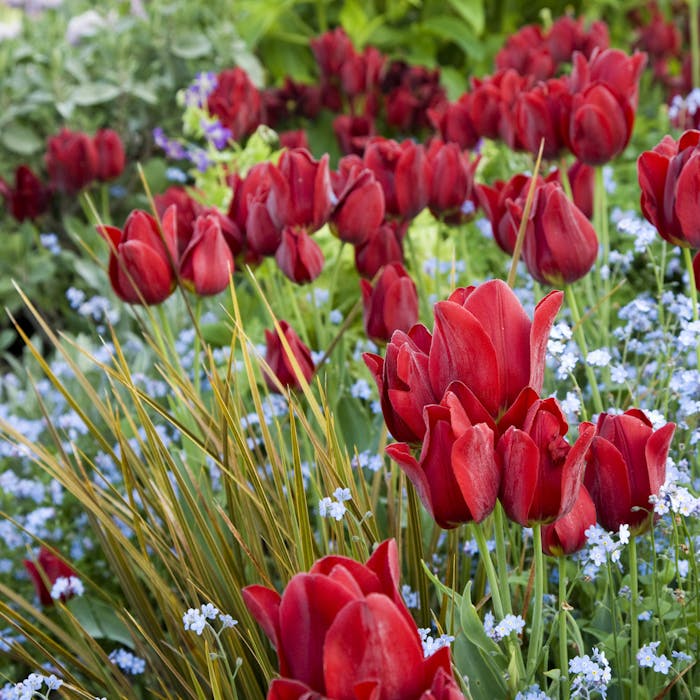
Tulips - Jacobean treasure and modern delight
Tulips were once an exotic species of plant that became almost a British obsession. First the Turks, then Europeans - including the British - admired these flowers, and the passion for them was even responsible for a financial crash in the 1600s.
In the wild in Asia, the small, often bright red original blooms which grow from bulbs, were a potent emblem for nomadic people and a welcome sign of spring. Almost half of the 120 known tulip species are native to central Asia, where they thrive in the extremes of baking hot summers and harsh, cold winters.
By the 14th century, tulips were being transported from Central Asia to the palace gardens of Ottoman sultans where they were highly prized. It is likely that ambassadors and envoys from the West first encountered them there. The name 'tulip' comes from the Latin word for turban.
Westerners began to covet these exotic flowers, and tulips were first brought to the Netherlands, and then from there exported to Britain. What has been called 'Tulipomania' occurred in the 1630s, when wealthy aristocrats would pay vast sums to be able to display these sought-after blooms in the grounds of their stately homes. A buying and selling frenzy took place until prices crashed in 1637.
Tulips rose to prominence again in the 19th century, when they were used in parterre bedding schemes to produce spectacular spring displays. The bulbs remain a popular choice in gardens great and small, and several gardens open to the public put on spectacular tulip displays in late spring, including Pashley Manor Gardens in East Sussex, which has an annual tulip festival.
They have been cultivated for sale as cut flowers in the UK in a number of areas, including the Fens around Spalding. Known as The Heart of the Fens, Spalding has been long famous as a centre of the bulb industry. It has had close links with the Netherlands (origin of the Geest family, who were former major local employers). The annual Tulip Parade took place on the first Saturday in May, from 1959 and was a major tourist attraction, but ended in 2013.
Further reading
Links to external websites are not maintained by Bite Sized Britain. They are provided to give users access to additional information. Bite Sized Britain is not responsible for the content of these external websites.
